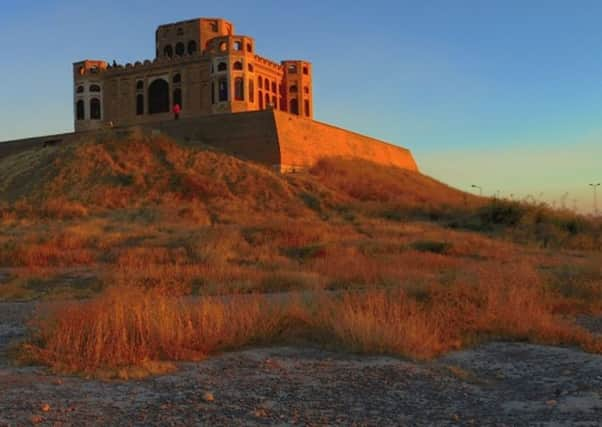Iraqi earthquake castle restoration


The Qala Shirwana - a baked brick castle - one of the region’s most recognised structures, was badly damaged by a powerful earthquake last year.
Dr Claudia Glatz, a senior lecturer in archaeology, is leading the Qala Shirwana Cultural Heritage Project (QaSCHP) to stabilise and restore the 200-year-old castle.
Advertisement
Hide AdThe Qala Sirwana is built on top of one of the tallest archaeological sites in the Garmian region, whose occupation history spans several millennia. The castle is unique in Kurdistan in its exceptional state of preservation and, together with the Erbil citadel, it is one of the most celebrated and publicised tourist attractions in Kurdistan.
The castle, on the outskirts of Kalar, attracts around 100,000 visitors each year and features prominently in the Kurdish Regional Government’s drive to attract more international tourists.
On 12 November, 2017, an earthquake shook the Kurdish region of north-east Iraq and neighbouring parts of Iran. More than 500 people died and over 7000 were injured.
The castle suffered significant structural damages as the shocks dislocated walls, terraces and caused the collapse of a central cupola on its roof. The four main towers also sustained significant cracks.
Shirwana Castle’s construction is ascribed to Muhammad Pasha Khasro beg-i-Jaff, a local tribal leader under the Ottoman Empire between 1866-1874.
Dr Glatz said: “The castle is of immense significance to the local population, who are still coming to visit it despite the earthquake damage.
Advertisement
Hide Ad“During our trip to Iraq, we carried out preliminary research into the castle’s history, which includes many architectural modifications, damage and rebuilding over the course of the past two centuries.
“Together with our colleagues in Kurdistan we are developing a plan to stabilise and rebuild it using traditional materials and techniques wherever possible.”
QaSCHP operates with the staff of the Garmian Directorate of Antiquities.
The project is funded by the Prince Claus Fund for Culture and Development.